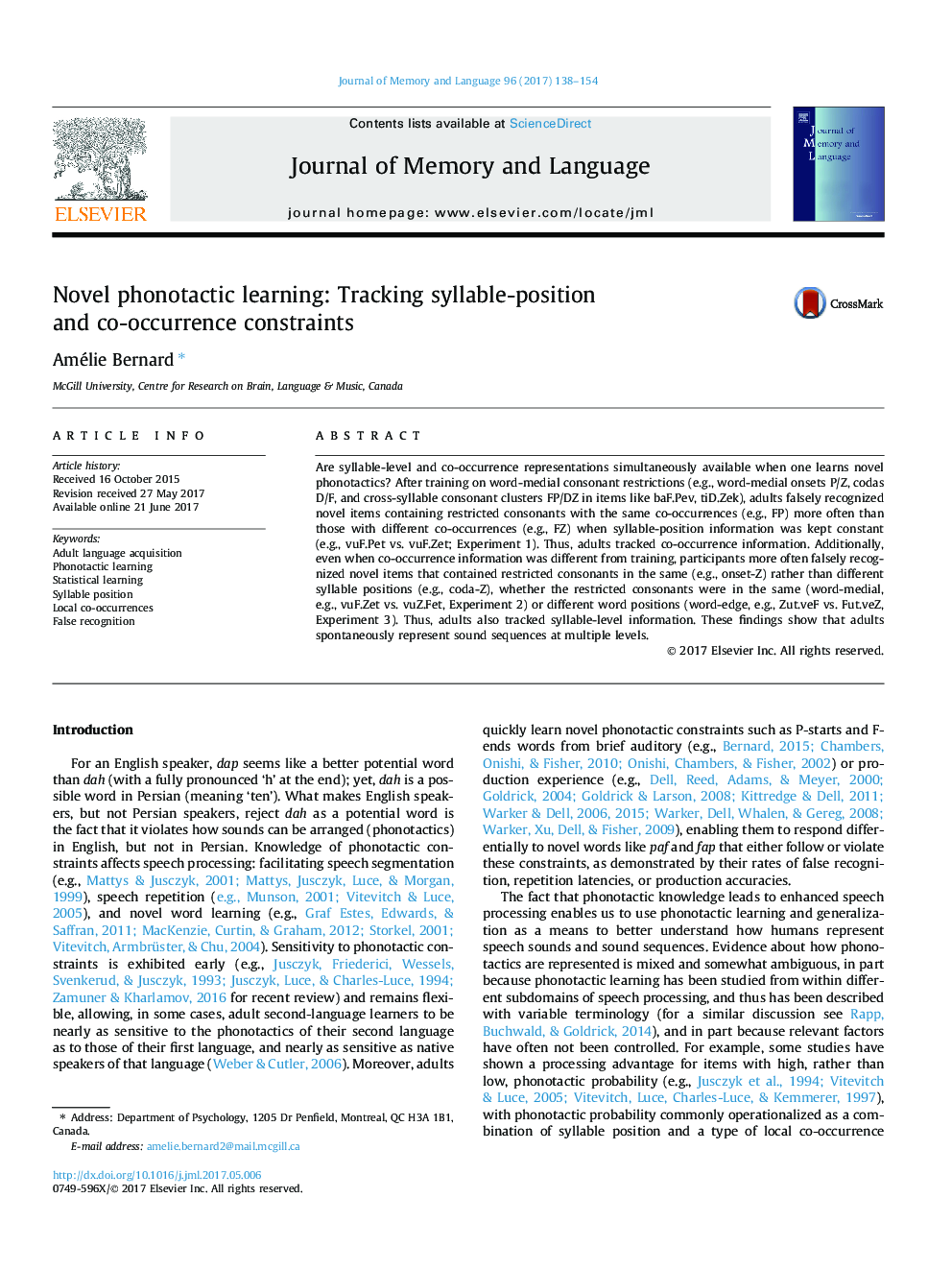| کد مقاله | کد نشریه | سال انتشار | مقاله انگلیسی | نسخه تمام متن |
|---|---|---|---|---|
| 5042564 | 1474623 | 2017 | 17 صفحه PDF | دانلود رایگان |
- Adults trained on phonotactic constraints on consonant positions and co-occurrences.
- Participants in 3 experiments learned from the same training items.
- They tracked co-occurrences when syllable position was held constant (E1).
- They tracked syllable position when co-occurrences were held constant (E2, E3).
- Sound patterns are represented at multiple levels (syllable position, co-occurrences).
Are syllable-level and co-occurrence representations simultaneously available when one learns novel phonotactics? After training on word-medial consonant restrictions (e.g., word-medial onsets P/Z, codas D/F, and cross-syllable consonant clusters FP/DZ in items like baF.Pev, tiD.Zek), adults falsely recognized novel items containing restricted consonants with the same co-occurrences (e.g., FP) more often than those with different co-occurrences (e.g., FZ) when syllable-position information was kept constant (e.g., vuF.Pet vs. vuF.Zet; Experiment 1). Thus, adults tracked co-occurrence information. Additionally, even when co-occurrence information was different from training, participants more often falsely recognized novel items that contained restricted consonants in the same (e.g., onset-Z) rather than different syllable positions (e.g., coda-Z), whether the restricted consonants were in the same (word-medial, e.g., vuF.Zet vs. vuZ.Fet, Experiment 2) or different word positions (word-edge, e.g., Zut.veF vs. Fut.veZ, Experiment 3). Thus, adults also tracked syllable-level information. These findings show that adults spontaneously represent sound sequences at multiple levels.
Journal: Journal of Memory and Language - Volume 96, October 2017, Pages 138-154
